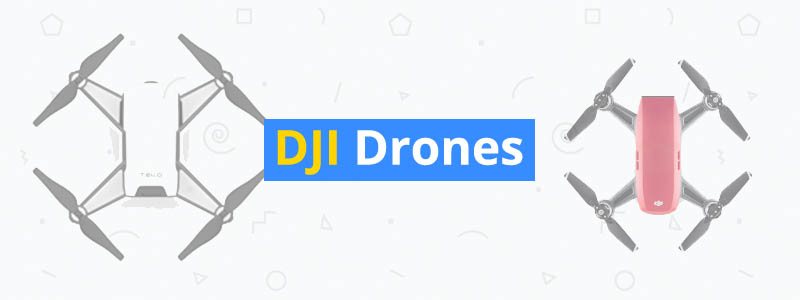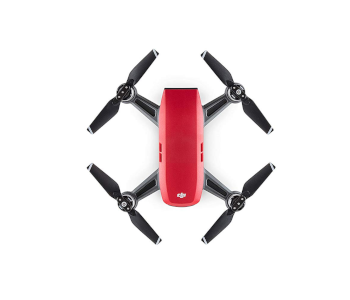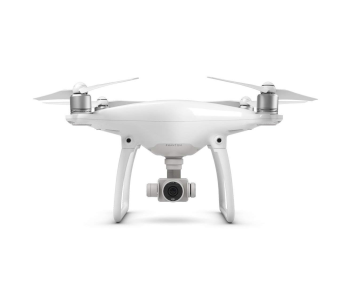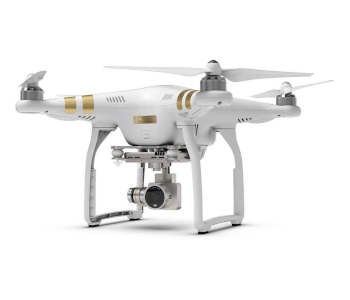Which is the Best DJI Drone? Best Options for Your Budget
Drones are becoming so common in our skies now that folks barely glance up anymore. What people do look at, though, is the incredible footage some drone pilots capture. This is the right place if you’re a novice who needs to know which is the best DJI drone to buy right now. You’re also in the right place if you’re a skilled pilot who wants to upgrade to a quad with more of everything.
There’s no shortage of camera drones to choose from whether you need one for work or leisure. There are also plenty of unknown models with convincing sales pages.
| Budget |
|---|
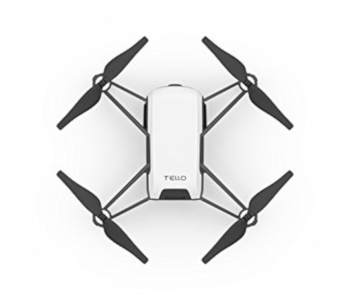 |
| DJI RYZE Tello Camera Quad |
| 4.4/5.0 |
| Flight Time: 13 minutes |
| Flight Range: 328 ft. (100m) |
| Affordable, automated flight modes, FPV capable, decent flight time, dual control. |
| Check Amazon |
| Best Value |
|---|
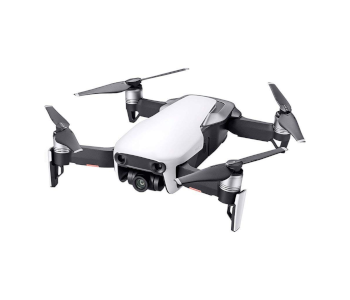 |
| DJI Mavic Air Foldable Camera |
| 4.7/5.0 |
| Flight Time: 21 minutes |
| Flight Range: 2.4 miles (4 km) |
| Easy to fly, gimbal camera, obstacle avoidance, decent flight time and flight range. |
| Check Amazon |
| Top Pick |
|---|
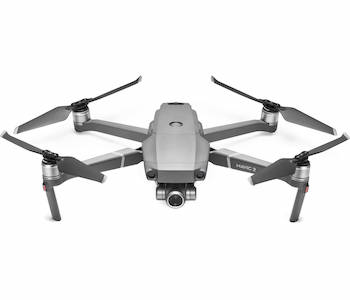 |
| DJI Mavic 2 Zoom |
| 4.8/5.0 |
| Flight Time: 31 minutes |
| Flight Range: 5 miles (8 km) |
| Long flight time, long flight range, intelligent flight, quiet, obstacle avoidance. |
| Check Amazon |
About DJI (Dà-Jiāng Innovations)
DJI is a Chinese technology enterprise founded in 2006 by a man called Frank Wang (Wāng Tāo). Consumers recognize the company for its affordable, technology-advanced unmanned aerial vehicles (UAV). We know them better as DJI drones, most of which—though not all—are camera quadcopters. DJI is a world leader and the company that continues to raise the bar and set new standards.
The strength of DJI is in its continued commitment to research and development. They succeed by turning highly-complex technology and dynamic designs into consumer-friendly devices.
Why DJI Camera Drones Rock
DJI is to the drone world what Honda is to the motorcycle community. Honda bikes—more than any other brand—fit riders like a well-tailored glove. They’re high-quality, reliable, and easy to operate. We can say the same things about DJI camera drones. People know what they’re getting before they even unbox the bird. They know it’s going to feel right, function well, and perform with reliable precision.
Buying Considerations
Needs and expectations differ between DJI drone pilots. That’s why there are so many models that cater to individual users. But what you want and what you get is often a compromise. You may desire a high-tech camera quadcopter, but will you exploit all the technology it offers? Despite different needs, there are a few considerations that most new buyers have in common.
Here are eight buying points to consider (add any of your own to the list):
- How much can you afford? Set a maximum budget
- What’s your skill level?
- What do you want from a DJI drone (be specific)?
- How long does the drone fly on a single charge (battery life)?
- How long does it take to recharge the battery?
- How much do spare batteries cost for the model you like?
- How far can the drone fly (control range)?
- What’s the quality of the stills and video, and is there any image stabilization?
You can find the answers to points 4–8 in each review along with other vital characteristics. Making a list of prerequisites is a simple yet effective way to make better buying decisions.
About this Guide
Almost all DJI Drones are winners with pilots, especially those from the quadcopter family. This guide doesn’t include them all. Here you’ll find the most popular DJI camera quadcopters. They are the ones the industry experts praise. They’re also the DJI models that enjoy the most favorable feedback from users. The table below shows the seven DJI drones reviewed in this no-nonsense guide.
DJI Drones Comparison Table
| Make and Model | Flight Time | Flight Range | Price |
|---|---|---|---|
| DJI RYZE Tello Learner Drone w/ HD Camera | 13 minutes | 328 ft. (100m) | Check Price |
| DJI Mavic Air Foldable 4K Camera Quadcopter | 21 minutes | 2.4 miles (4 km) | Check Price |
| DJI Mavic 2 Zoom Camera Quadcopter Bundle | 31 minutes | 5 miles (8 km) | Check Price |
| DJI Spark, Lava Red Mini Quadcopter Drone | 16 minutes | 1.2 miles (2 km) | Check Price |
| Phantom 4 Quadcopter w/ 4K Camera | 28 minutes | 4.3 miles (7 km) | Check Price |
| DJI Phantom 3 Professional w/ 4K Camera DJI | 23 minutes | 3.1 miles (5 km) | Check Price |
| DJI Inspire 2 Quad Drone w/ 5.2K Camera | 27 minutes | 4.3 miles (7 km) | Check Price |
The first three DJI camera drones are Best Budget, Best Value, and the Top Pick. The quads beneath those three are in price order from the lowest to the highest.
1. DJI RYZE Tello Learner HD Camera Quad | Best Budget
Editor’s Rating: 4.4/5
The makers say it’s fun, cute, and educational, and most Tello owners agree. With DJI technology, an Intel processor, and smartphone control, this is the most exciting camera quad in its class.
- Best feature 1: Educational, programmable, quadcopter
- Best feature 2: Easy to fly at beginner level
- Plus points: Affordable, automated flight modes, FPV capable, decent flight time, dual control
- Minus points: Average quality camera, no return-to-home
You can fly this marvelous little camera quadcopter right out of the box. Those who want to know about drones and how to tweak the settings can learn using the Tello EDU app.
Flying the DJI RYZE Tello Camera Quad
DJI’s RYZE Tello is perfect for indoor flying and even outside on calm days despite its tiny size. Its automated flight modes make light work of piloting and filming with this little craft. The flight features included one-tap auto-takeoff/landing and a low battery alarm. There’s even failsafe protection that lands the drone if it starts to go out of range, so no risk of flyaways.
Some of the simple, yet fun flight moves include throw-and-go, bounce mode, and 8D aerial flips. It’s even possible to enjoy a First Person View (FPV) experience with this tiny camera quad. You must buy the VR goggles separately if you want the fully immersive FPV experience. The stills and video footage is okay for a trainer drone at this price (see below). It’s a fantastic introduction to aerial filming.
The Not So Good
The footage from this capable little camera quadcopter is perfectly viewable. The quality won’t blow you away, though. Even so, it provides enough clarity and is an excellent introduction to working a camera quad. The other thing to be mindful of is that the Tello is primarily an indoor flyer. It can fly outdoors on windless days, but remember to keep within range as there’s no return-to-home feature.
| Tech Specs |
|---|
| Size: 3.9 x 3.7 x 1.6″ |
| Weight: 9.6 oz. (272g) |
| Camera type: 5MP 720P HD |
| Flight time: 13 minutes |
| Flight range: 328 ft. (100 meters) |
| Battery: 3.8 V 1100mAh LiPo |
| Charging time: 60+ minutes |
| Controller type: Smartphone/app or Bluetooth controller (not included) |
| The Pros |
|---|
| Affordable indoor/outdoor quad |
| Educational/programmable |
| Easy to fly, excellent trainer |
| Smartphone & Bluetooth remote control (not included) |
| Automated flight modes |
| First Person View (FPV) capable |
| The Cons |
|---|
| Average camera & footage |
| No return to home feature |
2. DJI Mavic Air Foldable 4K Camera Quad | Best Value
Editor’s Rating: 4.7/5
The DJI Mavic Air is not only small but foldable too. It’s a 4K camera drone that’s perfect for folks who travel light yet demand quality features and easy flight functions.
- Best feature 1: Lightweight, compact foldable design
- Best feature 2: Three control options
- Plus points: Easy to fly, gimbal camera, obstacle avoidance, decent flight time and flight range
- Minus points: Noisy, no side avoidance sensors
It’s a small drone but one that has a big appeal among fans. The DJI Mavic Air sits between the DJI Spark and Mavic Pro from where it attracts a niche market. Okay, let’s see how this puppy flies.
Flying and Filming with the DJI Mavic Air Camera Quad
This tiny bird is as tough as they come. It also has some level of obstacle avoidance to lessen the risk of accidents. Flying the DJI Mavic Air is easy whichever way you control it. The control options include a smartphone, a dedicated controller, or by using hand gestures. The latter is perfect if you need to launch the quad and start shooting close by at a moment’s notice.
The quads precise hovering and smooth performance are down to its Flight-Autonomy technology. FlightAutonomy lets pilots focus more on capturing stunning 4K aerial video and stills and less on flying. DJI’s Mavic Air has a 3-axis gimbal camera and a range of impressive filming modes. Some of these include slow-motion video, 32MP sphere panoramas, ActiveTrack, and six QuickShots.
The maximum flight time is a reasonable 21 minutes and the flight range is 2.4 miles (4 km). Charging the Intelligent Flight Battery is fast at just 55 minutes on average.
The Not So Good
The worst thing about the DJI Mavic Air is the racket it makes for a small drone. Its high-pitched whine can be irritating. It’s especially annoying flying at close quarters like when using hand gestures. The only other downside is the obstacle avoidance doesn’t have any side-facing sensors.
| Tech Specs |
|---|
| Size: 6.5 x 1.6 x 3.2” |
| Weight: 15.2 oz. (431g) |
| Camera type: 12MP 4K gimbal camera |
| Flight time: 21 minutes |
| Flight range: 2.4 miles (4 km) |
| Battery: 2375 mAh LiPo |
| Charging time: 55 minutes |
| Controller type: Dedicated RC |
| The Pros |
|---|
| Lightweight, foldable design |
| Fly w/ smartphone, controller, or by using hand gestures |
| Easy to fly for beginners |
| High-quality gimbal camera |
| Obstacle avoidance system |
| Reasonable flight tine |
| Long flight range |
| 8GB built-in memory |
| MicroSD Card Slot |
| The Cons |
|---|
| Noisy, whining quad |
| No side avoidance sensors |
3. DJI Mavic 2 Zoom Camera Drone Bundle | Top Pick
Editor’s Rating: 4.8/5
The Best Value pick must go to the DJI Mavic 2 Zoom. It’s also the first ever consumer quadcopter to include an optical zoom. That means it can record a style of video and aerial stills not seen before.
- Best feature 1: 12-megapixel camera w/ 24-48mm optical zoom lens
- Best feature 2: Compact, foldable design
- Plus points: Long flight time, long flight range, intelligent flight, quiet, obstacle avoidance
- Minus points: No hand gesture control, costly spares
The Mavic 2 Zoom has a 1/2.3-inch sensor and a 24-48mm optical zoom lens. It’s a first for camera quadcopters. The zoom provides new opportunities for aerial photographers and videographers.
Flying and Filming with the DJI Mavic 2 Zoom
The improvements for the Mavic 2 over the first generation Mavics are significant. The most notable are software upgrades, sensing abilities, and of course the high-quality camera. This quad can run DJI’s most recent and much-improved ActiveTrack 2.0 software. And the 10-sensor obstacle avoidance is the best there is. It gives pilots extra confidence when flying this costly bird in tight spaces.
Aside from the omnidirectional obstacle avoidance are the reliable and responsive Mavic 2 controls. There are also the invaluable autonomous flight features and the flexible camera options. The zoom function can operate during flight, so there’s no need to set the angle before takeoff. And the range of shooting options are simple to use and provide pro-quality video and stills.
The Mavic 2 Zoom Vs. the Mavic 2 Pro
The cameras and price tags are the main differences between the Mavic 2 Zoom and the Mavic 2 Pro. If you don’t need the zoom and want an even superior camera, you’ve got it with the Pro version. The DJI Mavic 2 Pro comes with a world-class Hasselblad L1D-20c, state-of-the-art drone camera. It’s a real beauty and sets a whole new standard in aerial image quality.
The Hasselblad camera on the Mavic 2 Pro boasts a powerful 20-megapixel 1-inch sensor. And its enhanced low-light capabilities are far superior to all DJI’s previous camera drones.
The Not So Good
DJI’s Mavic 2 Zoom is a beautiful, feature-packed camera quadcopter, but it’s not perfect. The missing hand gesture control is a disappointment for many DJI enthusiasts. The other criticism is the high cost of spare parts and accessories. It’s still an incredibly sought-after drone despite the few gripes.
| Tech Specs |
|---|
| Size: 18.2 x 12.2 x 9” |
| Weight: 32 oz. (907g) |
| Camera type: 12MP 24-48mm optical zoom |
| Flight time: 31 minutes |
| Flight range: 5 miles (8 km) |
| Battery: 3850 mAh LiPo Intelligent Flight |
| Charging time: 90 minutes |
| Controller type: Dedicated foldable RC |
| The Pros |
|---|
| High-quality zoom camera quad |
| Compact foldable design |
| Foldable dedicated controller |
| Intelligent flight features |
| Quiet compared to other quads |
| Full collision detection |
| Long flight time |
| Extended flight range |
| The Cons |
|---|
| No hand gesture control |
| The high cost of spares |
4. DJI Spark, Lava Red Mini Quadcopter Drone
Editor’s Rating: 4.4/5
DJI’s Spark is a favorite camera quadcopter for folks on the move. It’s fast, light, and can be in the air shooting and filming at a moments’ notice. It’s also incredibly wind-resistant for a drone in its class.
- Best feature 1: First Person View (FPV) capable
- Best feature 2: 2-axis mechanical camera gimbal
- Plus points: 3 control options, wind-resistant, intelligent flight modes, DJI GO 4 app
- Minus points: Average video, design not foldable, low-average flight time
The DJI Spark comes with a 2-axis stabilized gimbal to keep the footage steady. The camera has a 1/2.3” CMOS sensor and can shoot 1080p video and capture 12-megapixel stills.
Flying and Filming with the DJI Spark Mini
The Spark is a sophisticated camera quad packed with novice-friendly controls. Takeoff requires no effort from the pilot with the FaceAware feature. It works by launching the drone from the palm of a hand using facial recognition. It lifts off and then hovers as it awaits the next flight command. You can then continue to fly and film using hand gestures, a remote controller, or smartphone.
Recording video and shooting aerial stills is simple because flying is easy. The Spark uses DJI Intelligent Flight Modes along with highly-intuitive controls. Combined, they let pilots create cinematic videos using a few simple taps. It’s also possible to quickly edit and share the footage on social media with the free DJI GO 4 App. This DJI mini-drone also has an ActiveTrack mode that follows subjects.
DJI’s Spark meets most pilot’s expectations for a portable quality camera quad. It’s not without a few setbacks (see below), but the pros far outweigh the cons with this beauty.
The Not So Good
There’s a lot to love about the DJI Spark, but the video quality isn’t its best feature. It tends to be a tad pixilated and displays a little lag. It’s not terrible—far from it—but it’s only average compared to other drones in its class. DJI is famous for quality construction and foldable designs. Alas, the Spark—though small—is not foldable. The final con is the low-average flight time for a model at this price.
| Tech Specs |
|---|
| Size: 5.6 x 5.6 x 2.2” |
| Weight: 10.58 oz. (300g) |
| Camera type: 12MP 1080P 30fps |
| Flight time: 16 minutes |
| Flight range: 1.2 miles (2 km) |
| Battery: 11.4 V 1480 mAh LiPo |
| Charging time: 90 minutes |
| Controller type: Dedicated transmitter, smartphone/app, hand gestures |
| The Pros |
|---|
| Fast, agile, lightweight quad |
| Small & powerful camera drone |
| First Person View (FPV) capable |
| 2-axis camera gimbal |
| Three control options |
| Wind-resistant |
| Intelligent flight modes |
| DJI GO 4 app |
| The Cons |
|---|
| Video quality average |
| Non-foldable design |
| Low-average flight time |
5. DJI Phantom 4 Quadcopter w/ 4K Camera
Editor’s Rating: 4.6/5
DJI’s Phantom 4 was one of the most anticipated consumer drones before its release in March 2016. It continues to be a favorite among enthusiasts, and this short review explains why.
- Best feature 1: 12-megapixel 4K Ultra-HD 3-axis gimbal-stabilized camera
- Best feature 2: Obstacle avoidance (OS) system
- Plus points: TapFly, intelligent flight system, FollowMe, fast flying quad, long flight time
- Minus points: Set up time, scant app tutorials, OS front-facing only, costly batteries
Anyone who knows anything about drones has flown or at least heard of the DJI Phantom 4. Many of those awesome holiday videos on YouTube are the result of a Phantom 4 camera quad.
Flying and Filming with the DJI Phantom 4
This bird is stable in the air and easy to control from the ground. The takeoffs and landings are not the smoothest, but they’re not as shaky as they might appear. The Phantom 4 has a rock-solid hover and shows no sign of drift. These are the characteristics that make aerial photography and videography outstanding rather than good. It’s such an easy quad to fly; helped further by its TapFly technology.
The Intelligent Quadcopter
DJI’s TapFly system is—as the name suggests—a tap & fly feature. A pilot only needs to tap somewhere on the map-screen, and the Phantom 4 then cruises to the exact point. The drone’s automated obstacle-avoidance (OS) system navigates any obstacles that stand in its way en route. Less flying stress lets pilots focus on shooting incredible 4K Ultra-HD video and capture 12MP stills.
The Phantom 4 has a 3-axis stabilizing camera gimbal. The gimbal does a superb job at steadying the camera to ensure crisp, shake and blur-free footage. Now anyone can produce cinematic quality videos. Another standout feature is the intelligent flight support system. These are dual satellite and enhanced vision positioning systems. Together, they make flying reliable and safer indoors and out.
Other welcome features are the Follow Me mode, fast 45mph top speed, and long flight time. You can expect to keep this bird in the air for up to 28 minutes on a single charge in ideal conditions. Its 4.3 miles (7km) range is also impressive and much more than most pilots need or can legally fly.
The Not So Good
Those new to quadcopters may find the initial set up time quite long. The instructions tend to assume people have prior knowledge. The app instructions and tutorials are also on the scant side for newbies. Experienced users shouldn’t have any problems with either of the above, though. The drone only has front-facing obstacle avoidance, so be mindful of that. The final con is the high cost of spare batteries.
| Tech Specs |
|---|
| Size: 15 x 8.7 x 12.8” |
| Weight: 49.6 oz. (1406g) |
| Camera type: 12MP UHD 4K stabilized |
| Flight time: 28 minutes |
| Flight range: 4.3 miles (7 km) |
| Battery: 4S 5870mAh Li-Po Intelligent |
| Charging time: 60+ minutes depending on the power source |
| Controller type: Transmitter w/ holder for smart device |
| The Pros |
|---|
| High-quality gimbal camera |
| Tap fly technology |
| Follow Me mode (ActiveTrack) |
| Easy to fly once set up |
| Long flight time |
| Collision avoidance system |
| Intelligent flight system |
| Fast 45Mph top speed |
| The Cons |
|---|
| Longer set up time for newbies |
| Scant app tutorials |
| Front-facing obstacle avoidance |
| Costly batteries |
6. DJI Phantom 3 Professional w/ 4K UHD Camera
Editor’s Rating: 4.5/5
The DJI Phantom 3 professional has been with us for a few years now, and that’s a good thing. It shows that it’s still an excellent 4K camera quadcopter despite the newer competition.
- Best feature 1: 4K 3-axis gimbal UHD video camera
- Best feature 2: Easy to fly
- Plus points: Live HD view, fast charging, internal memory, Lightbridge, DJI Go app
- Minus points: Included memory card too slow/small, no prop guards
DJI’s Phantom 3 Professional sells well, despite the launch of the DJI Phantom 4. It’s a high-quality camera quadcopter that’s stood the test of time. Today, there are some fantastic new and used deals on offer with substantial savings.
Flying the DJI Phantom 3 Camera Quad
This drone—along with all the Phantoms—is easy to prepare for flight. The DJI GO app (formally Pilot app) is at the heart of the operation. The app has a plethora of smart, easy-to-use functions for users. Some of these include speed adjustments, tilting, and tracking to name a few.
The LightBridge technology is much faster and smoother than regular WiFi. Just attach your smart device (phone or tablet) to the DJI ergonomic controller to see what the camera sees. Flight time is on the high side of average at 23 minutes, and the range is a respectable 3.1 miles. Charging the battery is fast at only 50 minutes, but it’s always a good idea to invest in a spare or two.
It’s possible to fly the Phantom 3 Professional indoors, low to the ground, and other GPS blocked spaces. That’s thanks to the Vision Positioning technology. It works by scanning the area using ultrasonic and visual sensors.
Camera and Shooting Control
Flying, filming, and shooting aerial photos with the Phantom 3 Pro is as easy as it gets. The quad is a stable flier anyway, but the 3-axis gimbal keeps the camera rock steady in the air. Gimbal stabilization guarantees shake-free, high-quality 4K video and blur-free 12-megapixel stills. The drone saves the video to an internal 16GB MicroSD Card. Most pilots upgrade to a faster card with more storage.
The Not So Good
The included memory card is a nice touch, but it won’t satisfy most people. Its read/write speed is painfully slow, and the 16GB memory is too small. You also need a microSD card reader so that you can transfer data from the drone to a computer or smart device. The last con is that there aren’t any Phantom 3 prop guards, but you can buy them as optional extras.
| Tech Specs |
|---|
| Size: 18 x 13 x 8” |
| Weight: 44.8 oz. (1270g) |
| Camera type: 12MP 4K UHD stabilized |
| Flight time: 23 minutes |
| Flight range: 3.1 miles (5km) |
| Battery: 15.2V 4500mAh 4S Intelligent |
| Charging time: 50 minutes |
| Controller type: A dedicated transmitter |
| The Pros |
|---|
| Popular DJI camera drone |
| High-quality gimbal camera |
| Easy to fly and operate |
| Intuitive DJI Go app |
| Vision Positioning for flying indoors and other GPS-free zones |
| Live HD view via phone or tablet |
| Fast charging time |
| Internal memory |
| Lightbridge technology |
| The Cons |
|---|
| Included memory card too slow/small |
| Prop guards not included |
| The high cost of batteries |
7. DJI Inspire 2 Quadcopter Drone w/ 5.2K Camera
Editor’s Rating: 4.3/5
DJI’s Inspire 2 Drone is a serious flying camera for professional aerial filmmakers. The quad looks like a robotic insect made to fly, and that’s something it does exceedingly well.
- Best feature 1: Highly-durable magnesium alloy construction
- Best feature 2: High-end camera options
- Plus points: Dual-battery, fast flier, 1080P live view, long control range, obstacle avoidance
- Minus points: Pricy quad, expensive cameras
This drone is for serious filmmakers who demand exceptional flight functions and quality optics. It’s 360-degree rotating gimbal and high-quality 4K camera is just the start.
Flying and filming with the DJI Inspire 2
DJI’s Inspire 2 uses a highly-durable magnesium alloy in its construction. The app gives filmmakers access to fast and easy fingertip controls. This model comes with a capable 4K camera, but that’s not its attraction. The drone’s Spotlight Pro (a powerful tracking mode) is compatible with high-end 5.2K gimbal cameras. That opens a new world of complex cinematic quality footage with dramatic effects.
The DJI Inspire 2 has obstacle avoidance in two directions and has a top speed of 58mph (94kph). It also has an impressive 4.3 miles (7Km) range and long 27-minute flight time. The latter is thanks to the dual battery system. The Inspire 2 has enough power and flight time to go further—and back—in record time. Camera operators get a 1080p live view on their smart device screen via the DJI GO App.
The Not So Good
Any drone enthusiast would love to pilot and film with a DJI Inspire 2 camera quadcopter. Alas, it’s not a model most hobbyists can justify unless they go pro so that the quad can pay for itself.
The DJI Inspire 2 drone is a camera quad for serious filmmakers to exploit. And although it comes with a 4K camera, that’s not the one people buy this flying filmmaker for. The Zenmuse X5, X5R, and Zenmuse X7 cameras are high-end optics that add further to the drone’s high cost.
| Tech Specs |
|---|
| Size: 18 x 12 x 21” |
| Weight: 121.28 oz. (3438g) |
| Camera type: 360-degree rotating gimbal 4K |
| Flight time: 27 minutes |
| Flight range: 4.3 miles (7 km) |
| Battery: 22.8V 4280mAh LiPo 6S |
| Charging time (2 batteries): 90 minutes |
| Controller type: DJI GL6D10A dedicated transmitter |
| The Pros |
|---|
| Highly-durable magnesium allow construction |
| Retractable landing gear |
| Dual-battery system |
| 360-degree camera rotation |
| DJI Intelligent Flight modes |
| Dual operator control via FPV pilot camera |
| High-end camera options |
| Fast 58MPH top speed |
| 1080P live view |
| Long control range |
| Obstacle avoidance |
| The Cons |
|---|
| Pricy quadcopter |
| Expensive cameras |
Contents
- About DJI (Dà-Jiāng Innovations)
- Why DJI Camera Drones Rock
- Buying Considerations
- About this Guide
- DJI Drones Comparison Table
- 1. DJI RYZE Tello Learner HD Camera Quad | Best Budget
- Flying the DJI RYZE Tello Camera Quad
- The Not So Good
- 2. DJI Mavic Air Foldable 4K Camera Quad | Best Value
- Flying and Filming with the DJI Mavic Air Camera Quad
- The Not So Good
- 3. DJI Mavic 2 Zoom Camera Drone Bundle | Top Pick
- Flying and Filming with the DJI Mavic 2 Zoom
- The Mavic 2 Zoom Vs. the Mavic 2 Pro
- The Not So Good
- 4. DJI Spark, Lava Red Mini Quadcopter Drone
- Flying and Filming with the DJI Spark Mini
- The Not So Good
- 5. DJI Phantom 4 Quadcopter w/ 4K Camera
- Flying and Filming with the DJI Phantom 4
- The Intelligent Quadcopter
- The Not So Good
- 6. DJI Phantom 3 Professional w/ 4K UHD Camera
- Flying the DJI Phantom 3 Camera Quad
- Camera and Shooting Control
- The Not So Good
- 7. DJI Inspire 2 Quadcopter Drone w/ 5.2K Camera
- Flying and filming with the DJI Inspire 2
- The Not So Good

